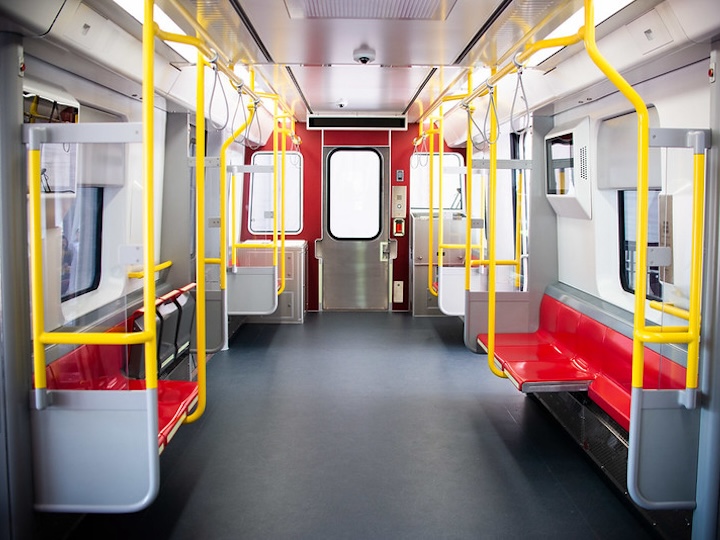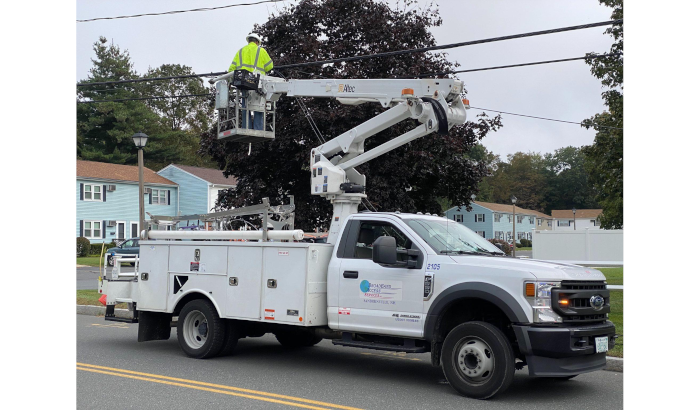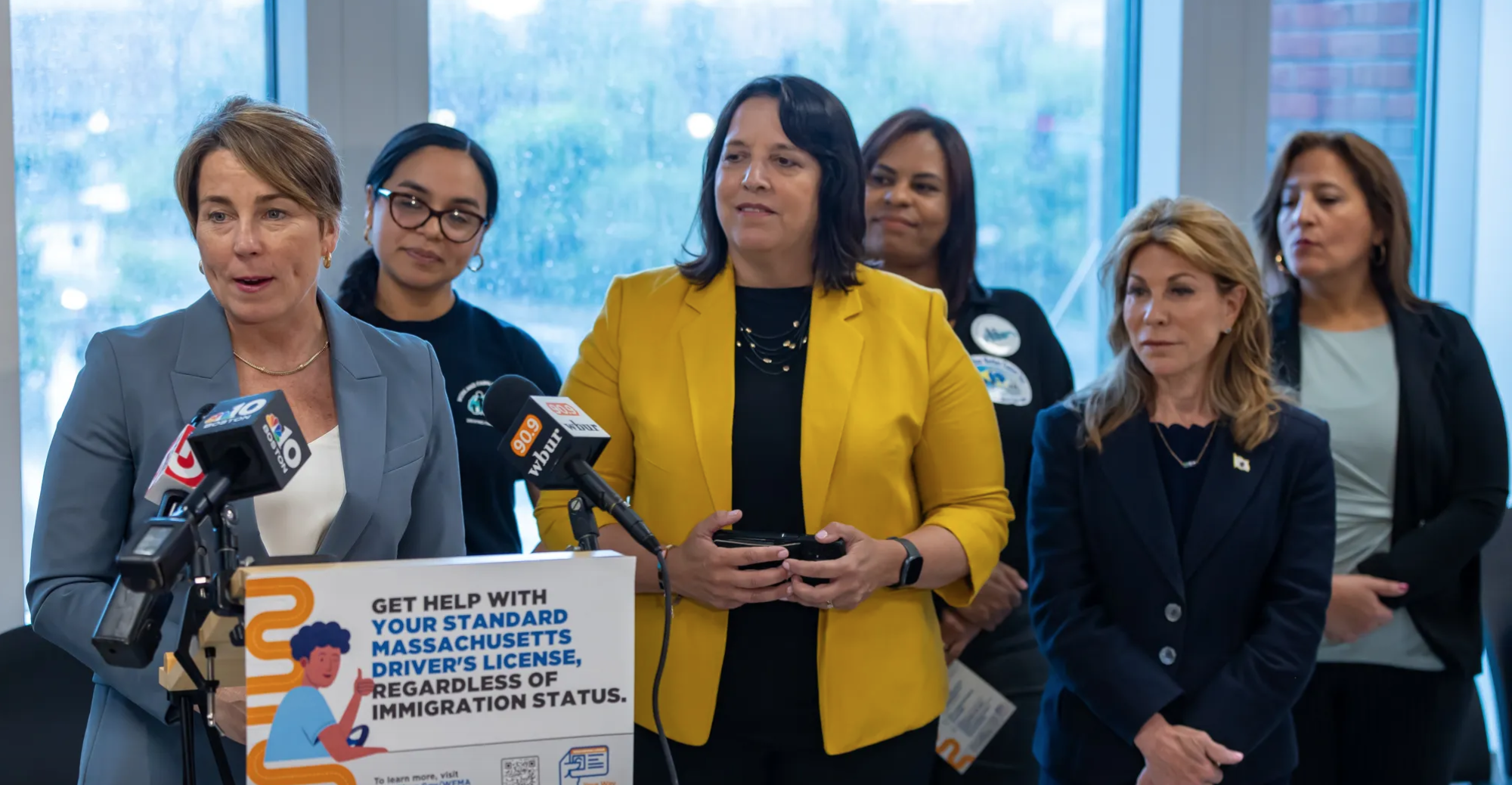“Sole-source procurement is not working for the T, it’s costing a lot of money and problems beyond the Red Line.”
By this year, the MBTA was supposed to have a fleet of new Red Line cars. But as the company charged with making those cars continues to fall behind in production, the T is looking to extend the life of its already- 30-year-old cars by another 15 years.
T officials have said they need to “reset” the contract for new Red Line cars. Asked if the rehab plan means that the MBTA will now get fewer new cars, a spokesperson sidestepped the question, saying the T “is committed to working closely with the contractor to accelerate the delivery.” Transit advocates said they think the T will eventually get its new cars, but note that the rehabilitations and latest setbacks show how the agency needs to be more transparent about its processes and make major changes in how it acquires goods.
“We need to fundamentally change the way the T procures services,” said Stacy Thompson, executive director of LivableStreets Alliance. “We need competitive processes and they need to be transparent.”
“It falls upon the MBTA to be fully transparent to the public about what the program looks like in bringing trains to a state of good repair so they’re running and able to serve the riders’ safety,” said Reggie Ramos, executive director of Transportation for Massachusetts.
The continuing delay of several dozen Red Line cars originally due in 2023 comes as the MBTA released its Capital Needs Assessment and Inventory. Just out in mid-November, the analysis describes how much infrastructure and material is in a state of good repair [SGR]. The MBTA would need $24.5 billion to bring everything in its domain up to that standard, according to the report.
About $2.4 billion of that is needed for “rolling stock,” with the report saying 50% of heavy (Orange, Red, Blue) and light (Green) rail cars are out of a state of good repair.
The report also describes “Key Capital Investments Currently Underway” to address transit track assets, and makes reference to the production and delivery of new Red Line cars as an ongoing project that “will rehabilitate or replace assets that are currently out of SGR.”
Ramos said the ongoing delay of new Red Line cars, the rehabilitation of existing cars, and the T’s underinvestment in capital needs over the last decade are all connected.
“If [the new Red Line cars] were scheduled to come in at a particular point in time as a measure to keep the system in a state of good repair, the inevitable question is, What is the impact on the state of good repair? The MBTA needs to quantify that.”
Ramos added, “There’s a cumulative effect in the volume of inefficiencies the public has to face. The delay in delivery impacts the rate of deterioration of cars, which will impact operations, which will ultimately impact the rider. You see the cascade of effects of underinvestment, it’s considerable.”

A 15-year extension
Two bids released earlier this fall show the T looking to do significant work on the Red Line’s No. 3 cars, which originally went into service in 1993. One calls for replacing interior and exterior lights on 83 cars, which are currently incandescent or fluorescent lighting, with LED lighting. “The intent is to preserve the life of the current cars for an additional ten years,” the bid’s scope reads.
The other bid looks for the overhaul of 64 HVAC Compressor/Condenser Units—for air conditioning—and 90 HVAC controllers for No. 3 cars, with each car having one compressor/condenser unit. “The goal of this specification is to provide overhauled equipment that will seamlessly integrate onto the existing cars,” the bid reads. “The overhauled equipment should safely operate in the MBTA Red Line environment for an additional fifteen years from the completion of the overhaul without requiring any additional work beyond routine maintenance.”
Ramos said the 30-year-old No. 3 cars may not have seen as much wear and tear during reduced pandemic service and shutdowns. Still, she said T officials need to keep their age in mind as they extend their track time.
“Service levels have not been the same—that comes into play assessing wear and tear of assets,” Ramos said. “Shutdowns impact the asset as a whole. But with extending the lifespan, we have to make sure it’s done in a way that doesn’t compromise safety.”
Thompson said the T would likely not need those cars to last the full 15 years, but that officials were using “best practices” to be safe. However, she said rehabilitation of those cars was necessary because of how the nearly decade old replacement plan has yet to come to fruition.
“This is in response to that,” Thompson said. “The [Deval] Patrick administration made the deal with [China Railroad Rolling Stock Corporation]. There were a lot of questions at the time of how that happened, and the [Charlie] Baker administration did a really bad job of managing the contract. … When you underinvest in operations, don’t create a team to manage contracts like this—you end up spending a lot more money to fix the problem.”

Sole source and secret
The T initially contracted with the China Railroad Rolling Stock Corporation [CRRC] in 2014, ordering 284 Orange Line and Red Line cars for a price of $566 million—the low bid by more than $150 million, and nearly $200 million below what the project was estimated to cost. Then-Gov. Patrick required the new trains to be assembled in Massachusetts, and though CRRC had never built a train car in the US, they agreed to open a factory in Springfield to finalize assembly of equipment partially built in China.
And at the end of 2016, the T ordered another 134 Red Line cars from CRRC, planning to replace the No. 3 fleet—and thus, the entire Red Line rolling stock—by 2023. A Boston Globe headline from that December read, “T gets OK for another 134 cars: Goal for Red Line is service every three minutes at peak times,” noting that T officials originally wanted to overhaul old cars but then instead decided to order new ones.
“There is no question that these vehicles right now are due for some form of a major overhaul or replacements,” then-COO and current MBTA Deputy General Manager Jeffrey Gonneville said at the time.
But while CRRC got that first order for both Orange and Red Line trains through a competitive bidding process, the MBTA awarded the 2016 contract directly to CRRC—without competition. Following a secret negotiation, the MBTA’s Fiscal Management and Control Board unanimously approved the $280 million contract on the same day it was first publicly presented.
CRRC’s name wasn’t even on the agenda for the meeting where the contract was approved, according to follow-up reporting by the Globe. Meanwhile, officials were already negotiating with CRRC, with the board meeting in private the week before to discuss the agreement. They told reporters that they were allowed to do so through a public meeting law exemption that allows boards to discuss litigation strategy, even if no lawsuits have been filed.
At the time, critics raised concerns about the private meetings as well as the lack of an open bidding process. Officials said they wanted to order the new trains quickly, before CRRC committed to contracts for other agencies, and to ensure the trains all met the same standard.
In an internal document quoted by the Globe, William Wolfgang, the agency’s director of vehicle engineering, and Gerald Polcari, its chief procurement officer, wrote, “The MBTA determined that a competitive procurement would be futile and did not contact other potential sources or advertise the procurement of the Red Line No. 3 fleet.” Then-MassDOT Secretary Stephanie Pollack told the Globe, “The litigation risk is that another manufacturer says, Hey, you should have done a regular procurement. We’re not aware of anyone who is saying that they are going to sue.”

More delays
Besides transparency concerns, Thompson said, the non-competitive bidding process and subsequent lack of oversight show the T needs to reform its procurement methods.
“Sole-source procurement is not working for the T, it’s costing a lot of money and problems beyond the Red Line,” Thompson said. “I think we need to make sure to get some money back—there should have been checks and balances in the original RFP in getting financial compensation if CRRC didn’t meet deadlines.”
While other manufacturers did not sue, the T itself has repeatedly dealt with delays from CRRC and problems with the trains that have been delivered, including derailments and a battery explosion. CRRC was originally required to deliver eight new cars a month to the MBTA, and have all 152 Orange Line cars supplied by January 2022 and all 252 Red Line cars supplied by September 2023. So far, they have sent 98 Orange Line cars and 14 Red Line cars.
While officials have blamed the COVID-19 pandemic and supply chain issues as part of the reason for delays, in January, Gonneville told the Globe the MBTA would re-examine the contract with CRRC. “The T needs to really take a step back and take a fresh look at this contract and really begin evaluating different strategies that we can be employing and using to continue to ensure that the T gets safe and reliable cars both on the Orange Line and on the Red Line here as quickly as possible,” the deputy general manager said.
And while officials are still evaluating under the supervision of new MBTA General Manager Philip Eng, the wait is only getting longer. The latest date for Orange Line car delivery is the end of this year, while Red Line cars are now set for September 2026, with officials saying those dates are still subject to change, according to WBUR.
At an October meeting of the MBTA Board of Directors in which members discussed the delays, Eng said the latest CRRC vehicles are exceeding standards and that the company is “committed” to delivering the cars it is being paid nearly a billion dollars to supply. A spokesperson said the contract with CRRC requires new cars go 90,000 miles between failures and the actual performance has been over 132,000 miles between failures. Furthermore, the T expects two “married” pairs of Red Line cars to be delivered every month going forward.
“They have committed to delivering this, and I believe that what we’re seeing is a spirit of partnership,” Eng told MBTA board members.
“The MBTA is committed to working closely with the contractor to accelerate the delivery of these new Orange and Red Line cars and ensuring they are of the highest quality in order to provide riders with the service they expect and deserve,” MBTA spokesperson Lisa Battiston said in a statement.
Thompson said she is happy to see Gonneville dig into the CRRC contract, and hopes the cars will be delivered by 2026, adding that the T additionally needs to bring its tracks up to par and hire more workers during that time for the system to function at its best. She also said the agency needs to revamp how it oversees contracts.
“The next piece is making sure we have the right people and the right expertise to draft contracts and manage them internally,” the LivableStreets director said. “I don’t think we can underestimate that. You have to think of how you manage the contract, how to manage the company you hired. … There are some positive signs [right now], and some glaring evidence of poor management in previous administrations.”
Ramos agreed: “More than anything, this delay has to have us looking to re-examine the process of procurement.”





